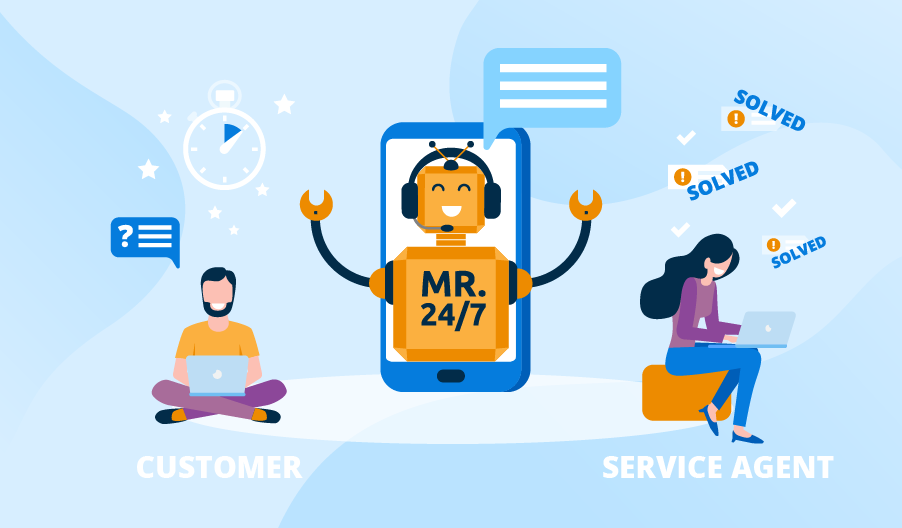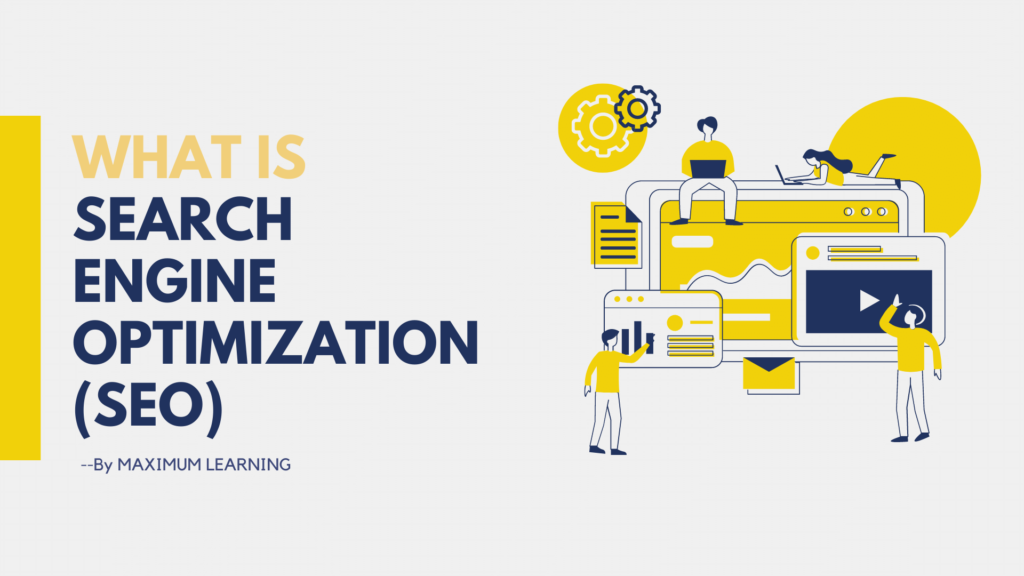In the ever-evolving landscape of digital marketing, businesses are constantly seeking innovative ways to engage with their audience, drive conversions, and enhance Chatbot Implementation for Improved Customer Interaction. One such technology that has emerged as a game-changer in the realm of digital marketing is chatbots. These AI-powered virtual assistants are revolutionizing the way businesses interact with consumers across various digital channels. In this blog, we’ll explore the pivotal role of chatbots in digital marketing and how they can be leveraged to achieve marketing objectives effectively.
1. Enhancing Customer Engagement:
Chatbots play a crucial role in enhancing customer engagement by acting as proactive conversational agents across various digital touchpoints. Whether visitors are browsing a website, interacting on social media platforms, or using mobile applications, chatbots can initiate interactions seamlessly. By promptly responding to inquiries, offering personalized product recommendations, and guiding users through the sales funnel, chatbots create meaningful interactions that capture and maintain customers’ interest in your brand. This instant availability and assistance foster a sense of trust and reliability, encouraging customers to engage further and explore products or services. As a result, businesses can cultivate stronger relationships with their audience, leading to increased loyalty and satisfaction. Moreover, chatbots streamline the customer journey, providing valuable assistance and information at every step, ultimately driving conversions and boosting overall engagement metrics.
2. Personalized Customer Experience:
Chatbots offer a significant advantage in delivering personalized experiences to customers on a large scale. Through the analysis of user data, preferences, and previous interactions, chatbots can finely tune their responses and recommendations to match individual preferences. This ability to personalize interactions enhances relevance, making customers feel understood and valued by the brand. For instance, a chatbot can suggest products or services based on a user’s past purchases or browsing history, provide tailored recommendations according to their stated preferences, or even address them by name for a more personalized touch.
By offering relevant and timely suggestions, promotions, and content, chatbots create a sense of anticipation and satisfaction for customers, ultimately driving engagement and loyalty. Moreover, personalized interactions increase the likelihood of conversion as customers are presented with options that resonate with their specific needs and interests. Overall, the personalized customer experience facilitated by chatbots not only enhances satisfaction but also strengthens brand loyalty and fosters long-term relationships with customers.
3. 24/7 Availability:
The invaluable feature of chatbots lies in their round-the-clock availability, a capability that sets them apart from human agents. Regardless of time zones or business hours, chatbots are tirelessly active, ready to provide immediate assistance to customers at any hour of the day or night. This ensures that businesses maintain a seamless and consistent presence, offering uninterrupted support to customers whenever they need it.
By being available 24/7, chatbots address a crucial aspect of customer service: responsiveness. Customers today expect quick and efficient assistance, and the instantaneous nature of chatbot responses meets this expectation head-on. Whether it’s a simple inquiry or a complex issue, customers appreciate the swift resolution that chatbots provide, leading to higher levels of satisfaction and an enhanced overall experience.
Moreover, the availability of chatbots around the clock contributes to an improved brand perception. Customers perceive brands with 24/7 support as more reliable, trustworthy, and customer-centric. Knowing that assistance is just a message away, customers feel reassured and confident in their interactions with the brand, which in turn strengthens brand loyalty and advocacy.
4. Lead Generation and Qualification:
Chatbots can be deployed strategically across various digital touchpoints to capture leads and qualify prospects. By engaging visitors in conversations, gathering contact information, and guiding them toward relevant resources or offers, chatbots play a vital role in driving lead generation efforts and nurturing leads through the sales pipeline.
Through personalized conversations, chatbots effectively gather crucial contact information from potential leads, such as email addresses or phone numbers. This data collection occurs seamlessly within the context of the conversation, reducing friction and increasing the likelihood of conversion. Additionally, chatbots can employ dynamic forms or surveys to gather additional insights into leads’ preferences, challenges, or buying intentions, facilitating more targeted follow-up strategies.
Moreover, chatbots excel at guiding prospects toward relevant resources, offers, or solutions based on their specific needs or interests. By analyzing user input and preferences in real-time, chatbots can recommend relevant content, products, or services, effectively nurturing leads through the sales pipeline. This personalized guidance not only enhances the user experience but also increases the likelihood of conversion by delivering timely and tailored solutions.
Furthermore, Chatbot Implementation for Improved Customer Interaction plays a vital role in qualifying leads by assessing their level of interest, intent, or readiness to purchase. Through interactive conversations, chatbots can ask qualifying questions, gauge purchase intent, or identify potential pain points, helping businesses prioritize and focus their efforts on leads with the highest likelihood of conversion. This qualification process ensures that sales and marketing teams can allocate their resources more efficiently, maximizing the return on investment and driving higher conversion rates.
5. Streamlining Customer Support:
Streamlining customer support through Chatbot Implementation for Improved Customer Interaction is a strategic move that many businesses are adopting to enhance their service offerings. Chatbots excel in managing routine customer inquiries, ranging from frequently asked questions to providing order status updates or troubleshooting guidance.
The primary advantage of using chatbots for these tasks lies in their efficiency and availability. Unlike human agents, chatbots can handle multiple inquiries simultaneously without experiencing fatigue or diminishing performance. This means that customers receive prompt responses to their queries, regardless of the time of day or volume of incoming requests.
Moreover, automating these repetitive tasks enables businesses to allocate their human resources more effectively. By freeing up staff from handling routine inquiries, they can redirect their attention to addressing more complex issues or providing personalized assistance to customers with unique needs. This not only improves the overall efficiency of the support team but also enhances the quality of service delivered to customers.
Reducing response times is another significant benefit of employing chatbots in customer support. With their instantaneous response capabilities, chatbots can quickly provide relevant information or solutions to common inquiries, thereby minimizing wait times for customers. This helps in fostering positive experiences and satisfaction among customers, as they feel valued and attended to promptly.
Furthermore, chatbots can gather valuable data and insights from customer interactions, which can be leveraged to improve service offerings, identify trends, and enhance the overall customer experience. By analyzing chatbot interactions, businesses can gain a deeper understanding of customer preferences, pain points, and frequently encountered issues, allowing them to make informed decisions and optimize their support processes accordingly.
6. Chatbot Implementation for Improved Customer Interaction, Data Collection and Insights:
Chatbots act as valuable sources of data and insights, capturing user interactions, preferences, and feedback in real-time. This wealth of information can be leveraged to gain deeper insights into customer behavior, preferences, and pain points, enabling businesses to refine their marketing strategies and enhance customer satisfaction.
One significant advantage of using chatbots for data collection is their ability to gather information consistently and objectively. Since chatbots follow predefined scripts or algorithms, they can capture standardized data points across all interactions, ensuring consistency and accuracy in the data collected. This data includes details such as customer demographics, frequently asked questions, product preferences, and feedback on the user experience.
By analyzing the data collected by chatbots, businesses can gain deeper insights into customer behavior and preferences. They can identify patterns, trends, and common pain points that emerge from customer interactions, helping them understand what drives customer engagement and satisfaction. For example, businesses can track which products or services are most frequently inquired about, which features generate the most interest, or which issues customers encounter most frequently during their interactions.
Moreover, chatbots enable businesses to gather feedback from customers in real-time. Through interactive conversations, chatbots can solicit feedback on products, services, or the overall user experience, providing businesses with valuable insights into areas for improvement. This immediate feedback loop allows businesses to address customer concerns promptly, enhancing customer satisfaction and loyalty.
The insights derived from chatbot data can also inform strategic decision-making across various departments within the organization. Marketing teams can use customer preferences and behavior data to tailor their messaging and campaigns more effectively, targeting specific customer segments with personalized offers or recommendations. Product development teams can use feedback gathered by chatbots to prioritize feature enhancements or address common pain points, ensuring that future product iterations better meet customer needs.
7. Seamless Integration with Marketing Channels:
Chatbots can be seamlessly integrated with various digital marketing channels, including websites, social media platforms, messaging apps, and email campaigns. This enables businesses to deliver consistent messaging and cohesive brand experiences across multiple touchpoints, driving engagement and fostering brand loyalty.
One key advantage of integrating chatbots with marketing channels is the ability to meet customers where they are. With consumers increasingly interacting with brands across various digital platforms, chatbots enable businesses to be present and available on channels that their customers prefer. Whether it’s through a website, social media platform, or messaging app, chatbots provide a convenient and accessible way for customers to engage with the brand in real-time.
Furthermore, integrating chatbots with marketing channels allows for personalized and targeted communication. By leveraging data collected through chatbot interactions, businesses can tailor marketing messages and offers to individual customer preferences and behaviors. For example, a chatbot integrated with a website can recommend products based on a customer’s browsing history, while a chatbot integrated with a social media platform can deliver personalized content based on the user’s interests and demographics.
Additionally, chatbots enable businesses to automate marketing processes and campaigns, saving time and resources while maintaining consistency in messaging. Chatbots can handle tasks such as lead generation, customer segmentation, and follow-up communication, freeing up human resources to focus on higher-value activities. This automation also ensures that customers receive timely responses and support, enhancing overall satisfaction and loyalty.
Moreover, integrating chatbots with marketing channels facilitates seamless customer journeys and omnichannel experiences. Customers can initiate interactions with a chatbot on one platform and seamlessly transition to another without losing context or continuity. For example, a customer may start a conversation with a chatbot on a website and continue it later via a messaging app, with the chatbot retaining the conversation history and providing continuity in the interaction.
Chatbots have emerged as indispensable tools in the arsenal of digital marketers, offering a myriad of benefits ranging from enhanced engagement and personalization to streamlined customer support and lead generation. By leveraging the power of AI-driven automation and natural language processing, businesses can elevate their digital marketing efforts, drive meaningful interactions with customers, and achieve their marketing objectives more effectively. As technology continues to evolve, chatbots will undoubtedly play an increasingly integral role in shaping the future of digital marketing. Embracing this transformative technology is essential for businesses looking to stay ahead in today’s competitive landscape.




